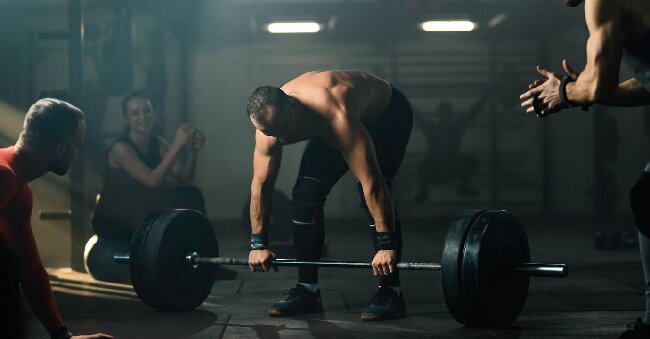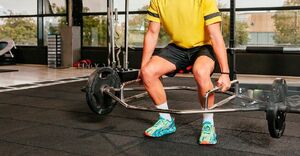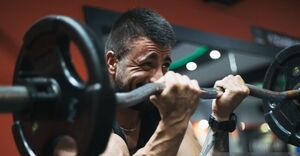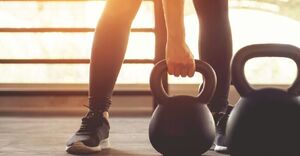
Benefits and Challenges of Deadlift Machines: Enhancing Core Strength
Deadlift machines are a popular piece of equipment in many gyms, but what exactly are they and how do they work? In this article, we will explore the benefits of using deadlift machines, including increased core strength, improved posture and balance, reduced risk of injury, and increased muscle mass.
We will also take a look at the challenges of using deadlift machines, such as proper form and technique, finding the right weight, overtraining, and limited range of motion. We will provide tips on how to incorporate deadlift machines into your workout routine effectively. Whether you are new to deadlift machines or looking to improve your technique, this article will provide valuable insights to help you get the most out of your workouts.
What Are Deadlift Machines?
Deadlift machines are an essential piece of gym equipment designed to facilitate the performance of deadlift exercises with enhanced stability and resistance.
These machines offer a guided path for the lifting motion, promoting proper form and reducing the risk of injury. They are especially beneficial for targeting specific muscle groups, including the hamstrings, glutes, and lower back.
Deadlift machines often come with adjustable handles and footplates to accommodate different body sizes and lifting preferences. Additionally, there are various deadlift machine variations, such as the sumo deadlift machine and hex bar deadlift machine, that offer versatility in targeting different muscle areas and catering to diverse fitness goals.
Incorporating deadlift machines into a workout routine can effectively contribute to overall strength development and functional fitness. So, consider adding them to your exercise regimen for optimal results.
How Do Deadlift Machines Work?
Deadlift machines function by providing a controlled platform for performing deadlift exercises, allowing individuals to engage specific muscle groups while managing resistance and stability.
Deadlift machines are specifically designed to target the posterior chain, which includes the glutes, hamstrings, and lower back. This results in improved muscle activation and strength gains.
The biomechanics of these machines also ensure proper form and reduce the risk of injury, making them a safe and efficient option for full-body workouts.
One of the main advantages of deadlift machines is their adjustable weight settings, making them suitable for people of all fitness levels. This allows users to progressively challenge themselves and see continuous progress in their strength and muscle development.
Incorporating deadlift machines into workout routines can have a significant impact on overall strength and muscle growth, making them a valuable addition to any fitness regimen.
What Are the Benefits of Using Deadlift Machines?
Using deadlift machines offers numerous benefits, including enhanced core strength, improved posture, and balanced muscle development, contributing to overall fitness and functional strength.
Increased Core Strength
Using deadlift machines leads to increased core strength, promoting overall stability and power development vital for various exercise programs and fitness goals.
Deadlift machines are a great way to engage your lower back, glutes, and hamstrings, giving you a complete workout for your posterior chain. With controlled lifting and lowering motions, you can also improve muscle endurance and overall strength. Additionally, the balanced nature of these machines helps develop coordination and stability, reducing the risk of injuries and enhancing athletic performance.
Including deadlift machines in your workout routine can greatly increase muscle power, leading to better overall fitness results. So why not give them a try and see the benefits for yourself?
Improved Posture and Balance
Utilizing deadlift machines aids in improving posture and balance, refining body mechanics and muscle coordination for efficient exercise performance and overall workout effectiveness.
The proper alignment achieved through deadlift exercises helps in strengthening the core and stabilizing the muscles, leading to better posture and reduced risk of injury.
By engaging multiple muscle groups such as the glutes, hamstrings, and lower back, deadlift machines promote overall body strength and stability, contributing to enhanced balance and coordination.
Practicing the correct technique on a deadlift machine ensures that the body maintains the appropriate form, thereby reducing the strain on the lower back and enhancing exercise safety.
Reduced Risk of Injury
The utilization of deadlift machines minimizes the risk of injury, with proper form and technique, and adherence to safety precautions, ensuring effective workout results and improved muscle stability.
Deadlift exercises using specialized machines are an effective way to target multiple muscle groups, including the glutes, hamstrings, and lower back, while minimizing the risk of injury. To ensure safety and effectiveness, it is crucial to maintain a neutral spine, engage core muscles, and use appropriate weight loads. Additionally, incorporating warm-up and stretching routines can further prevent injuries and enhance the overall effectiveness of the deadlift machine workout.
Increased Muscle Mass
Regular use of deadlift machines fosters increased muscle mass, targeting various muscle groups and promoting strength gains, endurance, and balanced muscle development vital for fitness and weight training.
This type of resistance training effectively activates the major muscle groups, such as the quadriceps, hamstrings, glutes, and erector spinae, providing a comprehensive workout that contributes to overall muscle coordination.
Deadlift machines are renowned for their ability to enhance not only muscle size but also muscle endurance, making them an indispensable tool for individuals looking to achieve a balanced approach to muscle development. The compound nature of the deadlift exercise engages multiple muscles simultaneously, leading to improved strength levels and high exercise effectiveness.
What Are the Challenges of Using Deadlift Machines?
While utilizing deadlift machines presents numerous benefits, it also comes with certain challenges, including maintaining proper form and technique, and managing resistance and intensity to avoid potential injuries and exercise limitations.
Proper Form and Technique
Maintaining proper form and technique when using deadlift machines is crucial for maximizing workout effectiveness, preventing injuries, and promoting stable body mechanics and muscle coordination.
When performing a deadlift, it is crucial to align the back, knees, and hips correctly. This helps to reduce the risk of strain or injury. Engaging stable core muscles throughout the lift strengthens the foundation, improving muscle coordination and balance.
Focusing on biomechanics can target specific muscle groups, making the exercise regimen more efficient and promoting better strength gains. Using the correct technique also allows for better activation of the posterior chain, resulting in a more comprehensive and effective workout.
Finding the Right Weight
Determining the appropriate weight when using deadlift machines is essential for optimizing muscle recruitment, strength gains, and exercise performance, while avoiding potential drawbacks and limitations.
It is crucial to find a weight that challenges the muscles without compromising form or risking injury. By selecting the right weight, individuals can effectively engage muscles throughout the entire movement, promoting muscle power and control.
This not only enhances strength gains but also contributes to improved exercise progress over time. Proper weight selection allows for gradual progression, ensuring continuous improvement in muscle recruitment and overall deadlift performance.
Overtraining and Overuse Injuries
Overtraining and the risk of overuse injuries are challenges associated with incorporating deadlift machines into workout routines, highlighting the need for injury prevention strategies and exercise equipment optimization.
Challenges can arise from the repetitive nature of deadlift movements, which can strain the lower back, hamstrings, and quadriceps. It’s crucial to maintain proper muscle coordination and form to prevent overuse injuries. This highlights the importance of a balanced workout routine with sufficient rest periods.
While deadlift machines offer significant benefits, such as targeting multiple muscle groups and increasing overall strength, it’s important to acknowledge their limitations to avoid potential drawbacks.
Limited Range of Motion
The limited range of motion inherent in deadlift machines can impact muscle activation and exercise efficiency, necessitating strategies to optimize strength development, body posture, and overall workout safety.
This restriction in movement can potentially limit the engagement of certain muscle groups, affecting the overall intensity and muscle endurance of the exercise.
It is crucial to ensure that proper form and technique are maintained to reduce the risk of potential injuries. Incorporating complementary exercises that target specific muscle groups can help offset the limitations of the deadlift machine, allowing for a more comprehensive and effective workout impact.
How to Incorporate Deadlift Machines into Your Workout Routine?
Incorporating deadlift machines into your workout routine requires strategic planning, focusing on exercise variety, proper form, and gradual progression to optimize muscle development, prevent injuries, and achieve fitness goals.
This can be achieved by alternating between different deadlift variations, such as sumo deadlifts, Romanian deadlifts, and trap bar deadlifts, to target various muscles and prevent plateauing.
Incorporating accessory exercises, such as hip thrusts and glute bridges, can complement deadlifts and strengthen the surrounding muscles, reducing the risk of injury and enhancing overall strength.
It’s essential to prioritize proper body mechanics, engaging the core and maintaining a neutral spine throughout each repetition to minimize strain and maximize the effectiveness of the exercise program.
Warm Up Properly
Prior to using deadlift machines, it is essential to warm up properly to prepare the muscles for exertion, enhancing muscular endurance, promoting strength development, and optimizing exercise benefits.
This can be achieved through a series of dynamic movements such as leg swings, hip hinges, and torso rotations. These warm-up exercises help to increase blood flow to the muscles, improving their elasticity and reducing the risk of injury during deadlifts.
A proper warm-up primes the muscles for optimal muscle activation, ensuring that each rep on the deadlift machine engages the targeted muscle groups effectively. Incorporating warm-up routines into your powerlifting or fitness regimen can lead to significant improvements in overall performance and reduce the likelihood of overexertion or strain on the body.
Start with Light Weights
Commencing deadlift exercises with light weights is advisable to focus on muscle activation, refine body posture, and gradually build strength, ensuring exercise safety, and steady progress.
This approach enables proper engagement of the targeted muscles and the development of muscle endurance. By starting with lighter weights, individuals can establish a solid foundation while reducing the risk of potential injuries.
It also allows for a more comprehensive understanding of the exercise’s mechanics, facilitating gradual progression to heavier weights. This method is particularly beneficial for those new to deadlift training, as it promotes the acquisition of proper form and technique before increasing workout intensity.
Focus on Proper Form and Technique
Emphasizing proper form and technique when using deadlift machines is essential for injury prevention, refining posture, and enhancing functional fitness through optimized muscle coordination and exercise progress.
This emphasis on form and technique plays a critical role in ensuring that the muscles are effectively targeted and engaged during the exercise.
By maintaining proper alignment and posture, individuals can significantly reduce the risk of injury while also maximizing the effectiveness of the deadlift movement. By honing in on the correct form, the muscles responsible for powering the deadlift are activated in a more targeted and efficient manner, leading to greater gains in strength and power.
Incorporate Variation in Your Routine
Introducing workout variations in your routine with deadlift machines can stimulate muscle development, optimize body mechanics, and enhance workout effectiveness, contributing to improved exercise efficiency and overall fitness level.
By incorporating these variations, individuals can ensure a balanced muscle development, reduce the risk of overuse injuries, and improve body posture.
Deadlift machines provide a stable and controlled environment, making it safer for individuals of varying fitness levels to engage in this compound exercise. This versatility can target different muscle groups, thus promoting overall strength and stability, and supporting functional movements in daily activities.
Listen to Your Body and Rest When Needed
Listening to your body and incorporating adequate rest periods within your workout routine is vital for maintaining muscle balance, ensuring optimized resistance management, and promoting sustained strength gains with minimized exercise limitations.
Integrating rest periods allows your muscles to recover and adapt to the demands of your workouts, enhancing muscle recruitment and efficiency.
By paying attention to your body’s signals, you can address muscle imbalances and avoid overtraining, ultimately improving muscle control and reducing the risk of injury.
Balancing resistance training with proper rest periods also supports the development of strength and power, leading to more effective and sustainable progress in your fitness journey.




No Comments